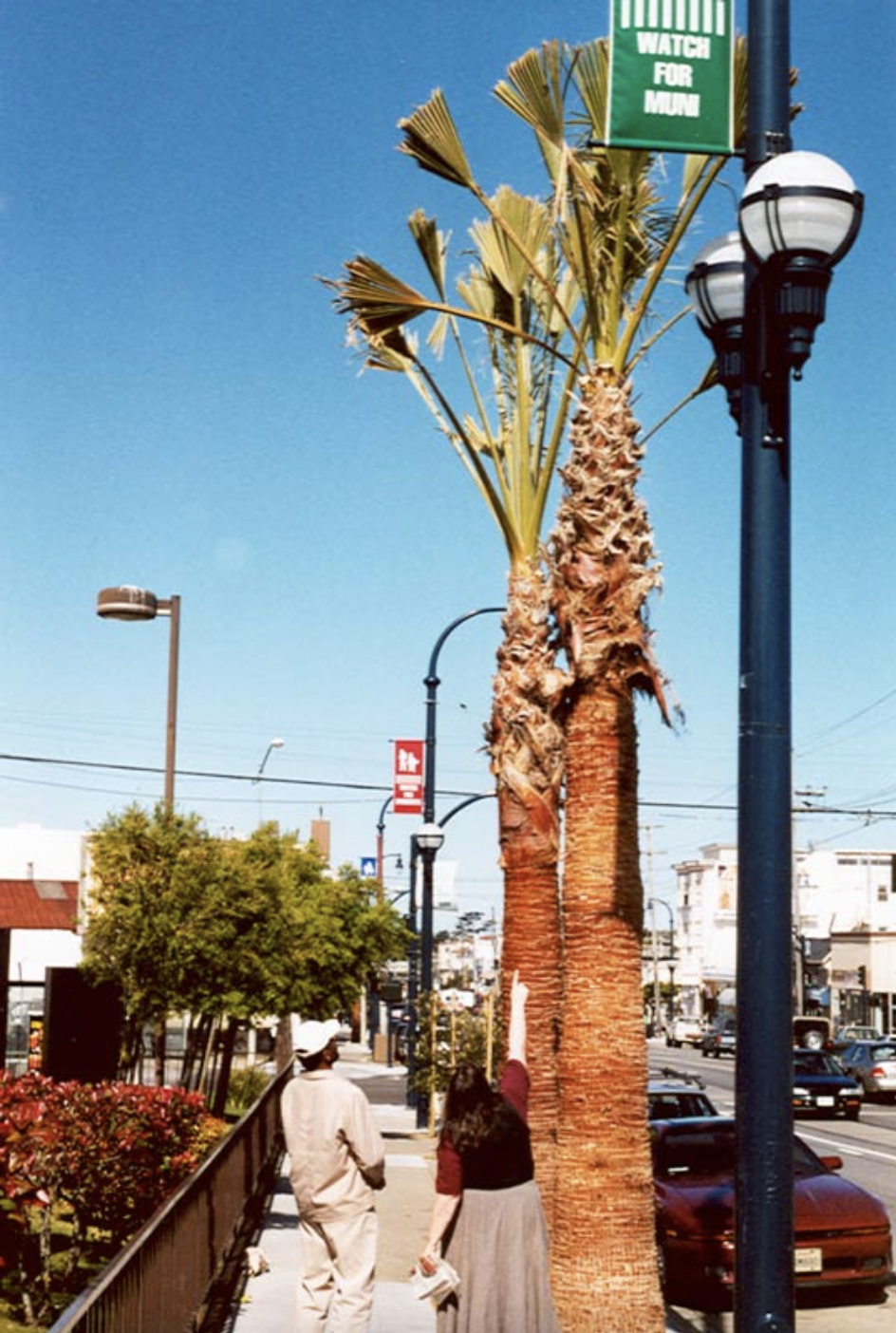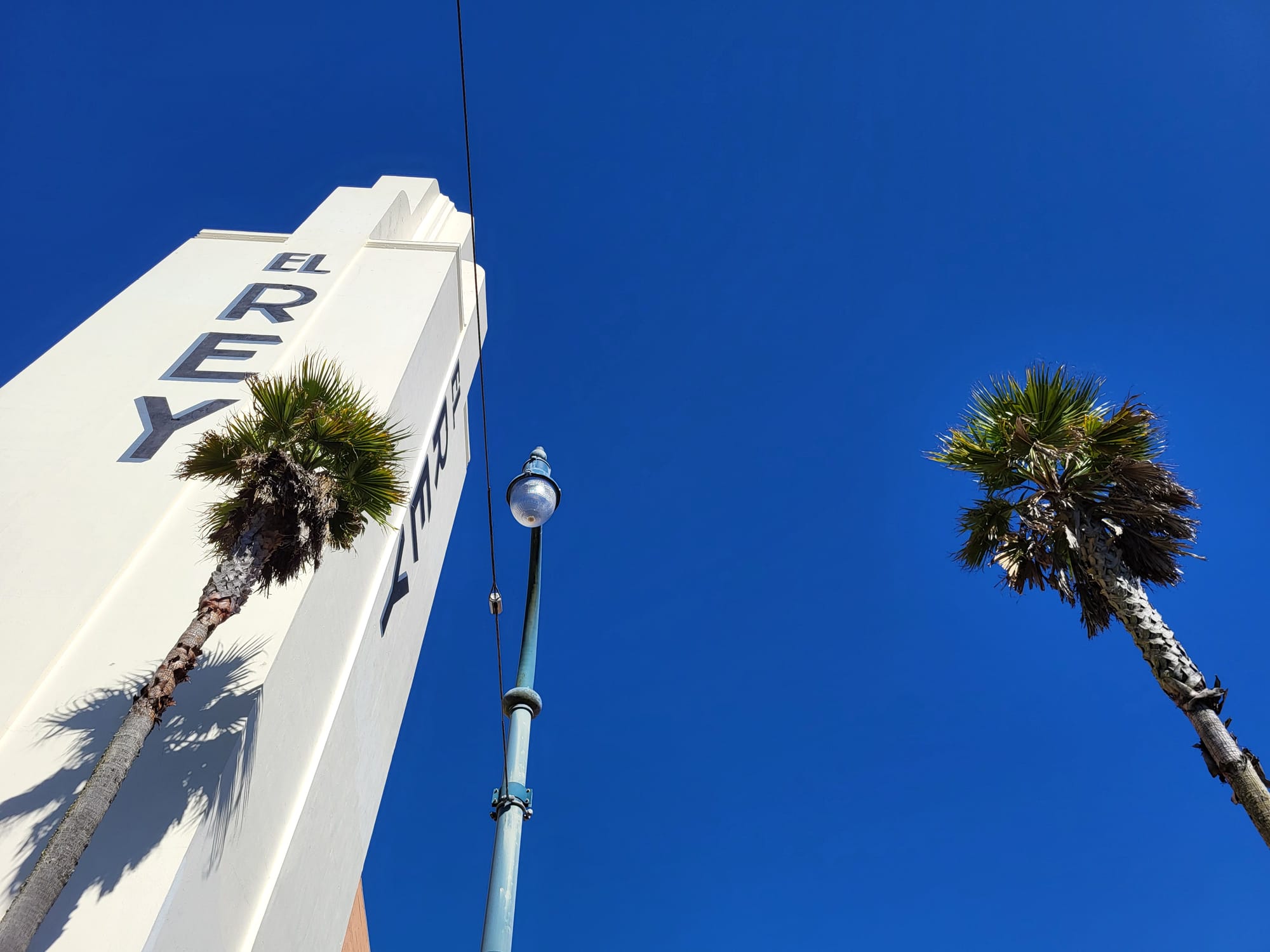🟧 Guardians Of The Rocky Outcrop // Crash Kills Elder
Plus: New cannabis shop Kushology is open, and a journalism educator gets feted.
Palms are a "California" aesthetic choice that doesn’t work in foggy Ingleside but there’s more to the story.

The palms on Ingleside’s Ocean Avenue have seen better days.
Many tree wells that once had three palms are missing one or two or completely empty. The Department of Public Works cut down a handful of palms in September and others may soon need to be removed.
There are roughly 47 that remain, according to the DPW’s Director of Policy and Communications Rachel Gordon.
“We are monitoring the health of the other palms — a handful are struggling but we’re hoping that with routine care and maintenance, they will spring back,” Gordon said.
Palms, which are costly, were first planted on the neighborhood’s main thoroughfare in the early 2000s. As part of the Ocean and Geneva Corridor Design plans from 2015, more palms were planted from Manor Drive to Brighton Avenue.

While most palms prefer warmer and drier climates, the DPW uses a smaller kind of hybrid species, the Filibusta, that can handle the city’s microclimates for the most part. However, site conditions like poor drainage or fungal infections like pink rot or fusarium, which can be caused during cool and wet weather, result in most palm species getting stressed.
Gordon said palms also tend to require less maintenance and get pruned as part of the DPW’s keymap maintenance cycles. In between prunes, inspectors will visit problematic specimens on a weekly or monthly basis to look for signs of decay.
San Francisco has a tree equity score of 87 because impoverished neighborhoods don’t have enough trees, according to the nonprofit American Forests, which tracks forest ecosystems.
Ocean Avenue’s tree canopy for Steven Brown, professor in the City College of San Francisco’s Environmental Horticulture and Floristry department, is “abysmal.”
“The city is responsible for trimming and care but they are not capable,” Brown said. “They don't have funding/arborists or a reasonable schedule for trimming.”
Brown added that there are few trees that are native to the peninsula and fewer that thrive in sidewalks, however, the California fan palms that are planted along Ocean Avenue do relatively well but are not so great at providing shade.
“We have a great diversity of tree species in San Francisco,” Gordon said. “The community desires the ‘California’ aesthetic palms provide and we will continue to utilize them in our street tree palette so long as they thrive and do not pose public safety hazards.”
Apart from the DPW, which has tentative plans to replace some of the recently removed palms, the Ocean Avenue Association routinely does maintenance work and some plantings. In March, the organization partnered with Climate Action Now, a nonprofit that works to increase green infrastructure investments, to plant a variety of greenery — Ironwood trees, manzanita and more — with plans to continue similar beautification efforts next year.

It was unclear if there is a long-term “tree plan” for the corridor outlining what species of trees and palms thrive and how much it would cost to plant and maintain them.
Keeping the urban canopy along Ocean Avenue green and healthy has been an uphill battle for some residents like Dan Weaver, who said the last time he felt that the neighborhood’s greenery was fully supported was during the administration of Mayor Willie Brown. He suspects the neglect comes from City Hall.
“Other neighborhoods get their [projects] done because they have connections and we don’t have it anymore,” Weaver said.
We deliver neighborhood news, events and more every Thursday.